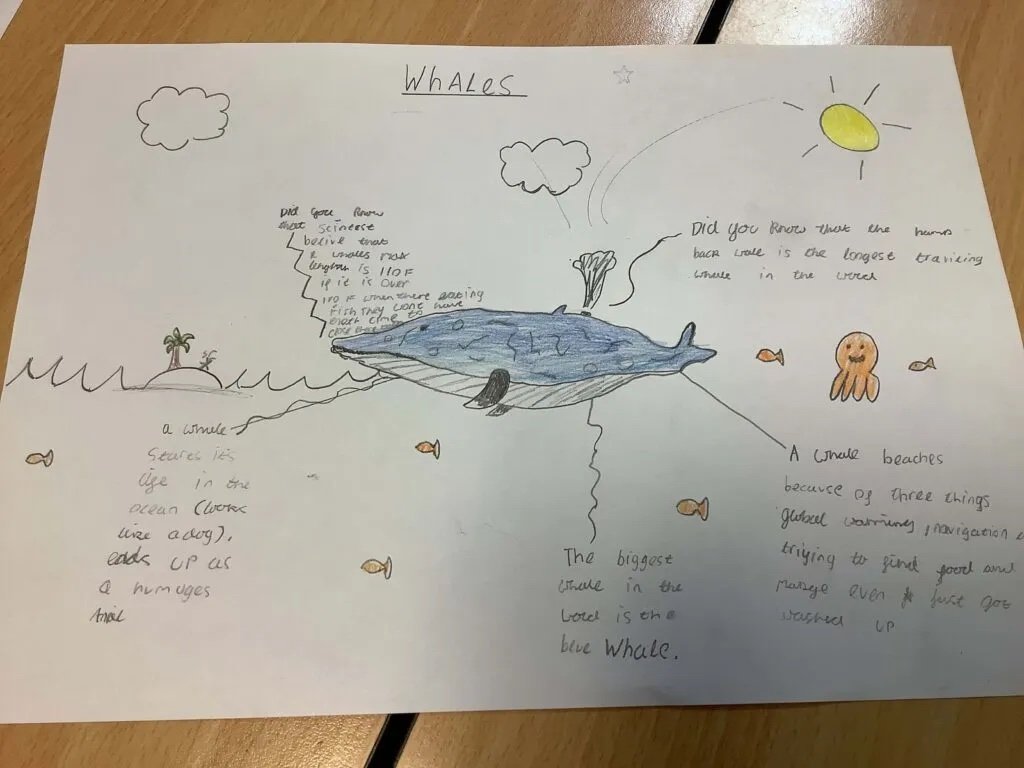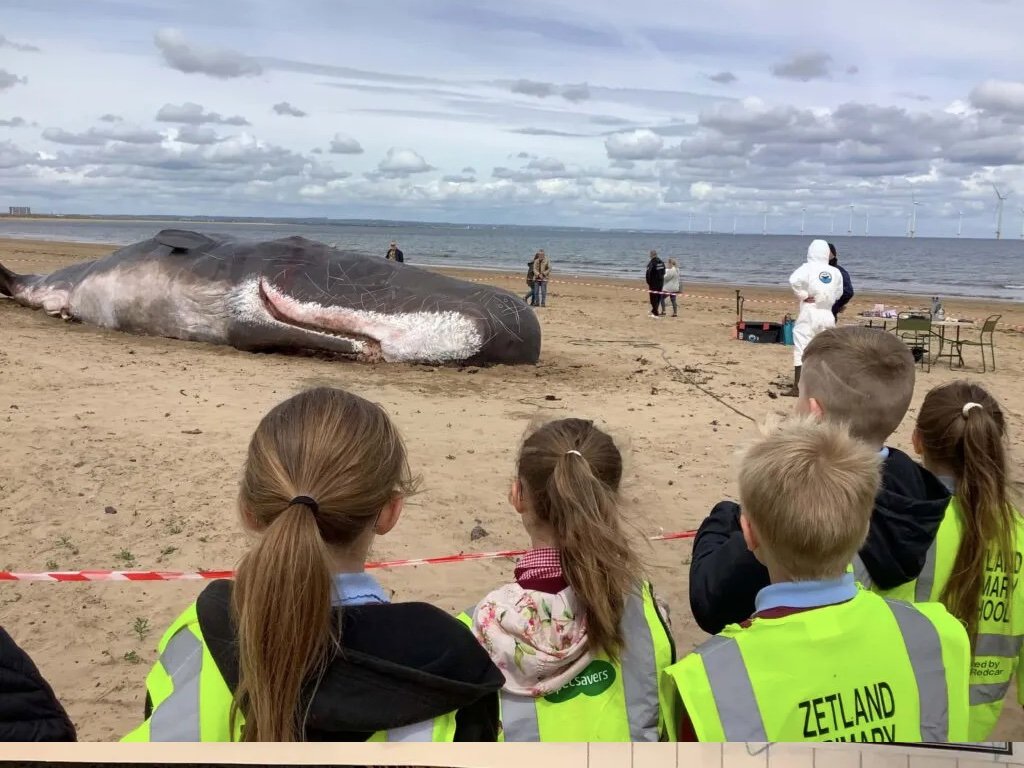
Working with Schools
Project overview by Andrew Stogdale of Spark Tees Valley who created our education programme
Whales are fascinating creatures and although they beach from time to time on northern coasts, each event is still something memorable for local people. Knowing the impact that the project would have on local communities, Spark got involved to create engaging resources for schools to use in the classroom. We assumed that at least a handful of schools would take the opportunity to engage with the event and build on it through literacy, art and the further curriculum.
We also felt that this needed to be something accessible for all children so designed resources that suited both KS1 and KS2/3, all working on the same sort of projects but at the right level. Although the tactile nature of a visit to the whale was always going to be the best and most engaging way of experiencing it, we used digital media and tools to allow the children to experience new ideas in a way that grabbed them.
'Advertising' the materials in advance was the trickiest part. 'The best kept open secret' in the North I think it was described as at one point. Our communications with the hundreds of schools we work with had to be circumspect in its description of the content of the days but compelling enough to get them to take part. Fortunately our reputation got many across the line and once they saw the focus and the reason for secrecy, they were pleased that their trust had been rewarded.
The resource materials used a combination of online tools that allowed the teachers to either guide the work step by step or allow the children to work independently, discovering facts and media from around the world in a safe environment. The resources were designed to allow a teacher to take them in any curriculum direction and this led to an amazing range of responses from different children in different schools.
We still don't know how many schools actually used the materials across the Redcar and Whitehaven beachings. Spark attended both sites and saw multiple schools actually visiting. We also went into some of the schools to see how they were responding. The impact on the children was palpable; this meant something to them. We also asked schools to send in work to a central blog over the course of the project and the images on this page show some examples that were received including annotated diagrams, letters and even green screened news reports.
The clickable resources had over 2000 views which was startling considering many classes of up to 30 children were led through them by just one teacher. The impact was huge, but most importantly binding. It formed a sense of community across schools working on the project from coasts East and West with schools across the Tees Valley and into Durham also getting involved. The children involved, from the youngest to the oldest, were part of a 'thing'. They were doing something that mattered, they had agency in the world to make their voice heard. And boy did they make us listen.
